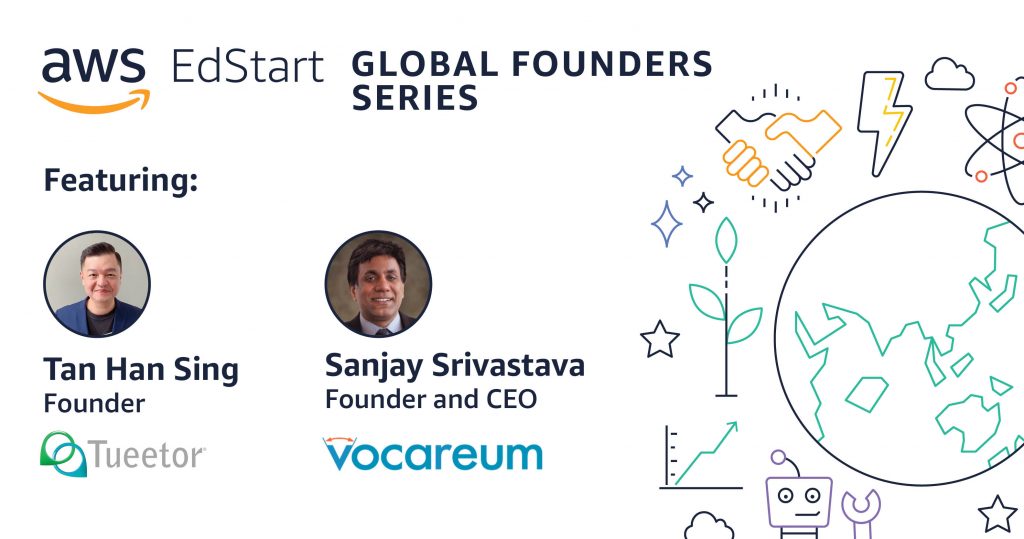AWS Public Sector Blog
Category: Public Sector
A Veterans Day Q&A with Marla Bradbury
In celebration of Veterans Day, we connected with Marla Bradbury, an Amazon Web Services (AWS) employee, Veteran, and former United States Army pilot. Read on to learn about her military career and what led her to Amazon as well as advice for transitioning military.
In celebration of Veterans Day
Thank you to all active and retired military members for your service. At Amazon Web Services (AWS), we are honored to work together with our nation’s Veterans—from helping transitioning Veterans begin their pathway in the cloud to hiring military spouses to supporting military families. In celebration of this year’s Veterans Day, check out some of our new resources and additional programs dedicated to serving this community.
How to host a virtual hackathon
As education has shifted to remote delivery, traditional mechanisms for engaging students and creating practical learning opportunities have had to adapt too. One mechanism—the hackathon—is increasingly taking place virtually. Typically, hackathons are in-person technology events where teams or individuals create solutions to a specific problem or challenge in a short timeframe, often 24 hours or a weekend. Hackathons are also social learning events where peers can connect, learn from each other, seek support from technical experts, and produce a cool (even if imperfect) solution. Cloud technology tools and resources can help virtual hackathons be as successful as traditional hackathons.
A pragmatic approach to RPO zero
Nobody wants to lose data—and setting a Recovery Point Objective (RPO) to zero makes this intent clear. Customers with government mission-critical systems often need to meet this requirement, since any amount of data loss will cause harm. RPO covers both resilience and disaster recovery—everything from the loss of an individual physical disk to an entire data center. Existing systems support RPO zero through a combination of architecture patterns (including resilient messaging) and on-premises legacy databases. Frequently interpreted as a database or storage requirement, providing for RPO zero requires thinking about the entire system. To do so, you can use AWS services and architecture patterns, which provide resilience to failure with clustering, auto scaling, and failover across multiple data centers within one region.
Building a culture of innovation to better serve citizens
Public sector organizations—from state and local governments, to nonprofits, federal, and defense agencies—often ask us, “How does Amazon innovate?” Our approach centers on four pillars that help us innovate on behalf of our customers: culture, mechanisms, architecture, and organization.
EdTech startups are making education more affordable and accessible to students at scale
AWS EdStart Members and founders—Tan Han Sing, founder of Tueetor, and Sanjay Srivastava, founder of Vocareum—are making educational resources more accessible to students at scale. Han Sing is focused on affordably connecting learners from all backgrounds with trainers, while Sanjay is focused on closing the global digital skills gap by providing turnkey virtual labs for higher education, tech training, demo, and assessment.
Top tips for a successful cloud modernization or migration
Digital transformation is a concept that is high on the agenda of many governments. Many large public sector organizations are undertaking mass migrations: the movement of a meaningful portion of your organization’s existing IT assets to the cloud. This might consist of a data center, a collection of data centers, a business unit, or some other portfolio of systems that is larger than a single application. Here are some top tips and real-life learnings for public sector organizations looking to execute a successful cloud migration strategy.
Serverless GIS with Amazon S3, open data, and ArcGIS
If you are hosting an ArcGIS web app today, then you are probably hosting it on a Windows or Linux server using traditional web server software like IIS or Apache. With the web hosting capability of Amazon S3 you can remove the need to run these servers and the maintenance, management, and monitoring overhead that comes with it. Serverless services like Amazon S3 can scale automatically and can be as simple as copying over your website assets to get up and running in minutes. This blog focuses on web app implementations using ArcGIS API for JavaScript (as other ArcGIS web apps have additional considerations).
Building your Cybersecurity Maturity Model Certification (CMMC) strategy using cloud technologies
The U.S. Department of Defense (DoD) released an interim rule, the Defense Federal Acquisition Regulation Supplement: Assessing Contractor Implementation of Cybersecurity Requirements (DFARS Case 2019–D041), which includes NIST SP 800-171 and Cybersecurity Maturity Model Certification (CMMC) assessment methodology and requirements. Organizations have been planning for CMMC, and with the release of this interim rule, are now beginning to prepare and build strategy for CMMC compliance. Learn how you can build your CMMC strategy using cloud technologies.
Supporting farms and families, affordably and at scale
ECHO is a nonprofit, founded in 1981, equipping small-scale farming families worldwide with access to knowledge, seeds, and agricultural training. The organization teaches small-scale, sustainable farming methods so families can provide for themselves and their communities. They provide training in agricultural techniques globally, with centers in Southeast Asia, East and West Africa, and Florida in the United States, empowering small-scale family farmers to thrive.









